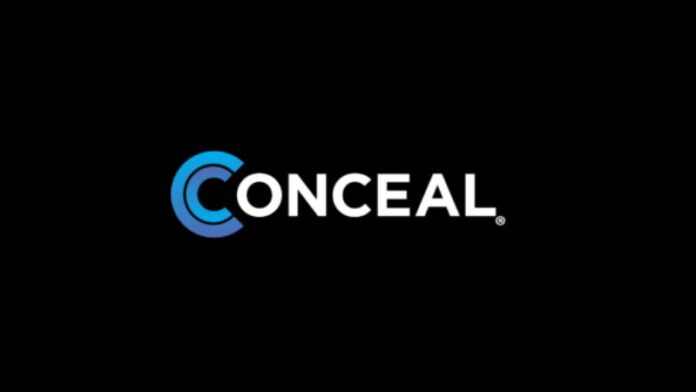
Today marks an exciting milestone in Conceal’s journey. We are thrilled to announce a new round of funding led by Two Bear Capital, with continued support from our existing investors, Allegis Cyber and Gula Tech Adventures. This investment is more than just capital. It is a strong validation of our vision to transform how organizations secure access and protect against browser-based threats. The team at Two Bear shares our belief that security needs to move into the browser, where users work. Legacy architectures built on proxies, VPNs, and data center dependencies cannot keep up with the pace of modern business.
When I joined Conceal, I did so because I saw a rare opportunity to fundamentally change how enterprises deliver both browser security and Zero Trust access. The browser has quietly become the most targeted part of the enterprise attack surface. It is where employees spend most of their day, accessing sensitive applications, sharing data, and interacting with content that can easily be weaponized. Yet the tools available to protect it are either outdated or unnecessarily complex. Our goal at Conceal is simple: make it easy for organizations of any size to protect their people, applications, and data directly at the browser, while providing Zero Trust connectivity that is fast, seamless, and scalable.
Read More – Counsel Health Raises $25M in Series A Funding
The problem facing most organizations today can be summed up as the Two Stack Problem. On one hand, you have the stack that tries to secure the browser. On the other hand, you have the stack that tries to deliver Zero Trust connectivity. Each one has its own set of tools, agents, and infrastructure that must be deployed, configured, and maintained. And neither stack works particularly well.
Let’s start with browser security. The “new approach” is to deploy an enterprise browser. In theory, this gives IT control and visibility into how users interact with web content. In practice, it creates friction and frustration. Employees currently use Chrome, Edge, Safari, Brave, Firefox, and we are seeing a massive influx of AI drivin browsers. Forcing users to switch is no easy task. Even if you manage to deploy the enterprise browser, you must then ensure everyone uses it. If even a handful of employees choose their own browser, your organization is exposed.
Now look at the Zero Trust stack. To achieve Zero Trust access, organizations today are forced to deploy a maze of connectivity products: VPNs, proxies, VDIs, and web gateways, all working together to steer, decrypt, inspect, and verify user connections. Each of these components requires ongoing upkeep and generates an endless stream of headaches and troubleshooting nightmares. Users are stuck with latent connections and backhauled traffic resulting in poor experience often affecting morale.
In 2025, that is an unacceptable level of complexity. Connectivity and security should not require this kind of overhead.
We have the technology to do better, and at Conceal, that is precisely what we are doing.
Back in the early 2010s, I was part of a company that helped transform endpoint security using artificial intelligence and machine learning. At that time, the idea of detecting malware without signatures was viewed as heresy. The industry had long accepted that signature updates were the cost of doing business. But when we proved that we could detect and block never-before-seen malware using AI and ML, everything changed. The same experts who once called us crazy were suddenly racing to hire data scientists and replicate what we built.
Today, no one relies on signature-based detection as their primary defense. That era ended because we redefined what was possible. We changed the state of endpoint security forever.
At Conceal, we are doing the same thing for Security Service Edge (SSE) and Zero Trust Network Access (ZTNA).
We have developed a way to provide SSE capabilities natively inside any commercial browser: no proxy, no enterprise browser, and no traffic backhauling required. Conceal analyzes activity inside the Document Object Model (DOM) and stops threats before they can escape the browser. By securing the browser itself, we eliminate one of the biggest blind spots in cybersecurity. At the same time, we deliver direct, Zero Trust connections to private applications, whether they are in the cloud or on-premises, without VPNs, VDIs, or complex routing.
With Conceal, the Two Stack Problem disappears. We combine security and connectivity into a single, browser-native platform that works with your existing infrastructure and identity providers. The organizations we work with immediately see the impact. They can consolidate redundant infrastructure, reduce their attack surface, and reallocate budgets that were once tied up maintaining legacy systems.
This is not just about reducing cost. It is about freeing security and IT teams to focus on innovation rather than maintenance. When they see our platform in action, they realize how much of their old stack existed purely to compensate for an outdated paradigm.
In cybersecurity, there are sea change events that permanently alter the landscape. The move from signature-based to AI-driven endpoint protection was one of those moments. The shift to cloud-native architectures was another. What we are doing at Conceal represents the next one.
Read More – Weave Bio Raises $20M in Series A Funding



